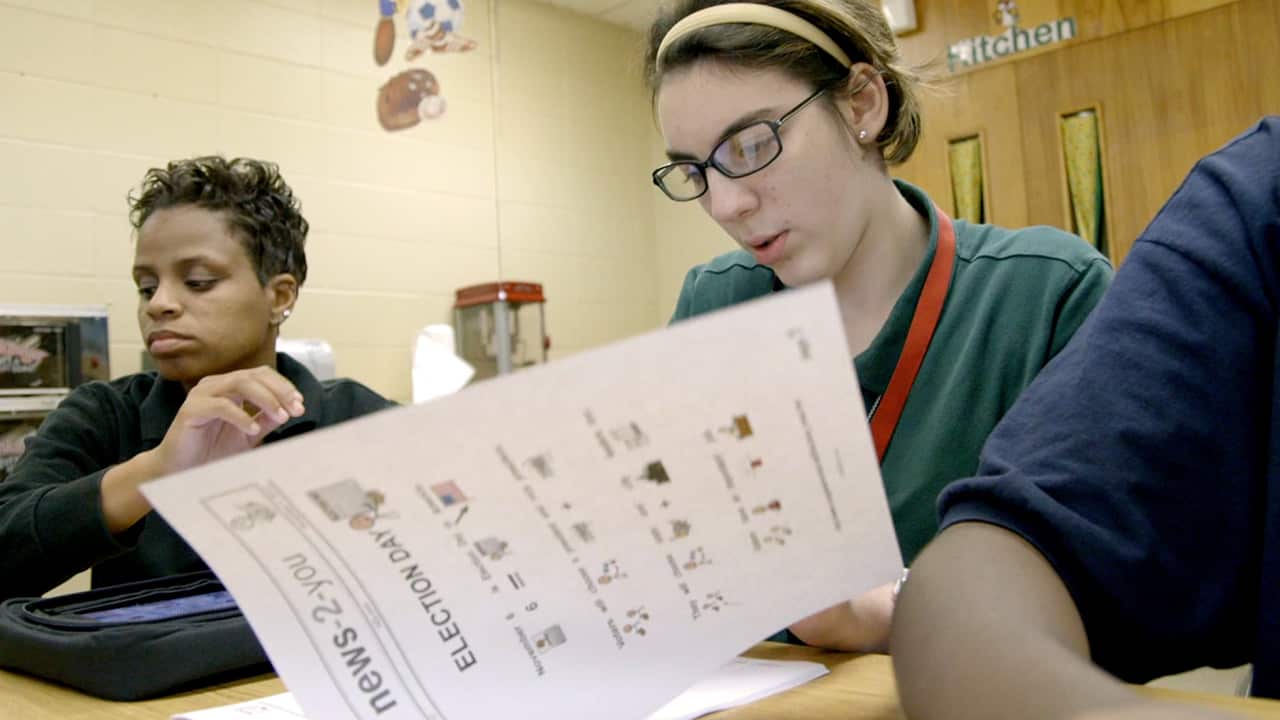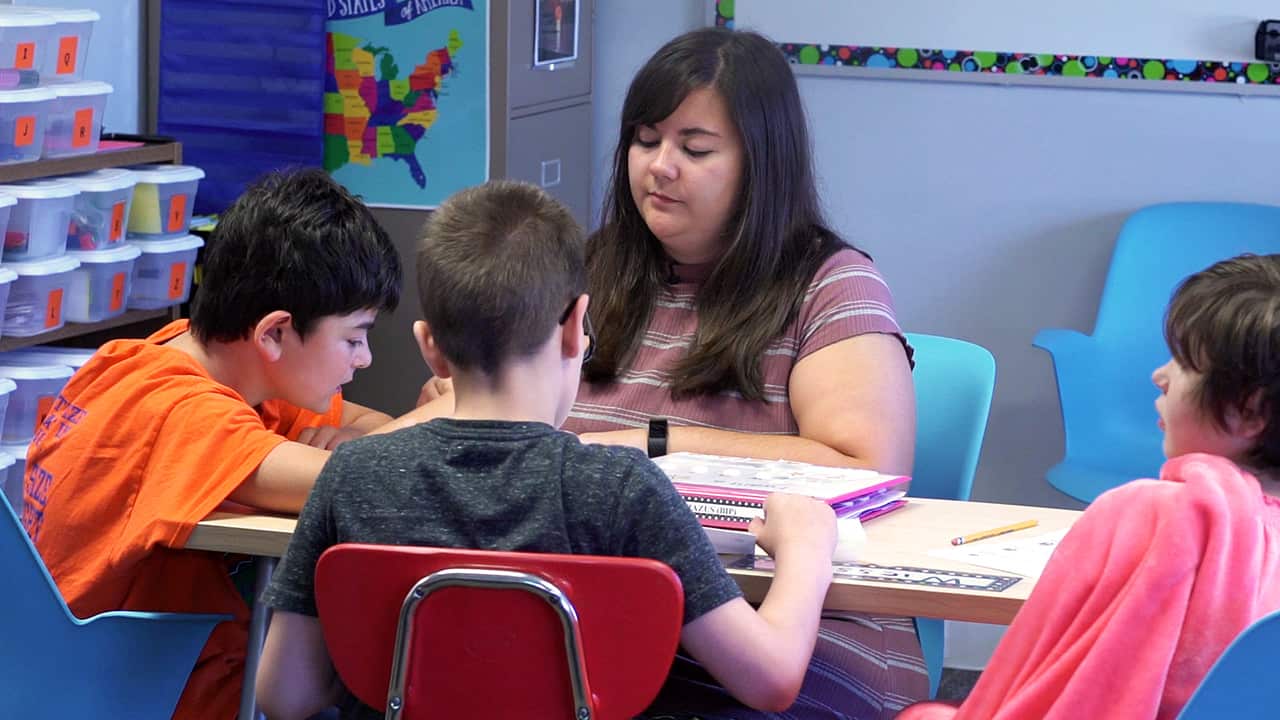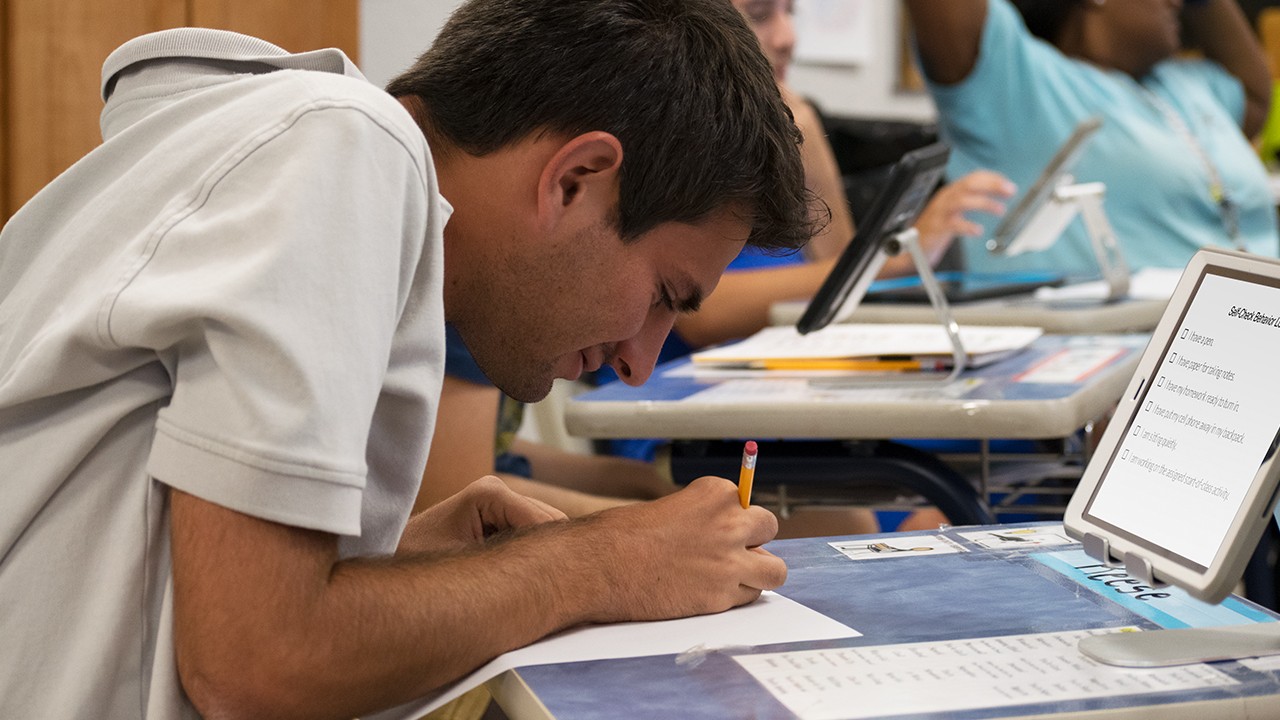Are there any engagement-based approaches that you find work better than others?
I definitely like to use music, props and videos but I think a solid combination of them works best. As you know, there are so many different ways that students learn and not everyone learns the same way. If you can use a multi-sensory approach and give students texture, smell, sounds and visuals I think that creates the best experience. When you’re introducing your students to something for the first time, it’s always a learning experience. So as you get to know your students’ preferences, you’ll find that some approaches might work better than others.
Do you have any advice for getting your students with the most significant cognitive challenges to participate?
Try different things and push them to do as much as they’re capable of doing. Having other adults in your classroom buy into that thinking is a big support for my students of all ability levels. I might have to sit down with them and literally raise their hands. For example, today I said, “We’re doing a simulation about roller coasters,” and some of my students weren’t quick to respond by putting their hands up in the air to pretend we were riding, so my assistants and I helped them by putting their hands up. Sometimes it’s just about getting even a small amount of participation from your students. It doesn’t have to be all of them doing something because with a range of disabilities in the classroom, that’s not always going to happen. You just need to support the students and help them experience it in their own way. Be creative and think of any way possible that you can get the students involved.
Another example is cooking. If you have a student who is lower functioning you’re obviously not going to have them mix with a spoon, and they might not be able to grip a hand mixer, but I’ll assist them with gripping the mixer and I’ll do the moving for them. They’re still assisting me and mixing ingredients and they’re also getting that vibrational feedback, which is a good sensory experience for some students.
I know you’ve worked a lot with students with autism. Would you give that same advice or use those same tactics for engaging nonverbal students with autism?
Yes, of course. And, one point I want to touch on is that this goes with knowing your audience. Especially with your kiddos with autism, some things might upset them more than others so be mindful of that. Some students might not like loud sounds, so you might need to turn down your sound a little bit or have headphones available. Or, they might not like the feeling of the mixture vibrating or exposure to certain textures. If you know it’s something that sets them off, just be mindful of that.
For students who are nonverbal, get them involved by having them answer in different ways. Today I was reading a story about different choices at an amusement park. What I did was ask each student three choices that were on the page, like what ride would they go on. I had kids who could respond verbally but then to be prepared for the students who are not verbal, I created cards for them. It only took about five minutes to make and print them out and then my students were able to pick from a field of options for their answer. If your students have a speech therapist, you can collaborate with them on different ideas to engage your nonverbal learners with lessons. I have four students in my classroom right now who are nonverbal and they have communication devices. I’m constantly talking to my speech therapist for engaging ways I can use their devices with them.
Do you find that there’s a particular age range with which engagement-based learning works best?
I think engagement-based learning can work with any age group. I’ve used this approach with middle school and elementary school students. Middle school was definitely a bit easier because they are at a different point in life. Again, you just need to know your audience, identify what works and what doesn’t work and be willing to try different things. It can sometimes get a bit more hectic with younger kids but that’s when you utilize the support system of your paraprofessionals. And take notes on what’s working or what you would change, whether it’s mental or physical notes. It requires being able to challenge both yourself and your students. Sometimes I even tell my assistants, “It’s not going to be easy for us in the classroom, but we’re doing things to help our students.” What might be a very fun lesson for your students can get a little hectic and stressful for you or your paraprofessionals, but it’s all worth it in the long run! Sometimes I reflect back on my lessons and think, “Wow, I really gave my students a fun experience and they learned from it.”
Speaking of paraprofessionals, besides sharing your lessons what are some other ways that you collaborate and get them involved?
I make sure that they have access to my students’ behavior intervention plans (BIPs). That way my assistants are not only hearing things from me, they’re actually reading legal documentation stating how you should be addressing certain things with your students.
Where do you get your vocabulary words for your word wall?
They are the vocabulary words that I had access to in Unique Learning System in the middle school grade band. Each month comes with 10 vocabulary words and corresponding definitions that went along with the chapter book that we read.
Can you explain vocabulary basketball game in a little more detail?
Yes, I’d love to. I place a basketball hoop on the chair and I have different colors for each month. I get the vocabulary words, paired visual and definitions from Unique Learning System—so I use the words that we’re working on for that month but I keep all the words up from the entire year. At the beginning of the unit, I give the students a word. For example, if ”˜law’ was the word, I would say, “ok find the word ”˜law.’” Then I assist them in finding that word. I try to have them do it as independently as possible but it is typically more guided at the beginning. Once they find the word, I encourage them by saying, “Awesome, you found the word. There’s a point! Now you can read the definition for me.” After that, my students would get to shoot a basket. I have a couple different locations set up and if they make if from one location they get a point, but if they make it from the farther location they get a second point. If the students were not able to find the word, then they wouldn’t get a point but I would still let them shoot the ball.
Once the students are identifying the words more easily, I will take it up a notch and actually give them only the definition and they have to find the word. The group I had were pretty competitive, which really helped my students progress a lot.
Another fun twist is to tie technology into this game. My kids loved sports and were excited about different sports teams. So they wanted to be named by different team names, which I let them pick. I’d assist as needed but they usually picked their own team name. I would tell them, “Ok, go grab your iPad and tell Siri what team you want to be.” Then Siri would display the team name and the students would copy that on the board. They were actually responsible for writing the team name down and then tracking their points. It was a fun way to tie a lot of different skills into the game.
Then we’d play again toward the end of the month—sometimes what I called Extreme Vocabulary Basketball. I would give them any word that was on the word wall and tell them to find it. And again, they could shoot after identifying the word.
What exactly is a brain break and how long are they?
Brain breaks are something that a lot of elementary teachers use, but I think that they could be appropriate for middle schoolers, especially if you’re working students who have more profound needs. A brain break is a time where the students are not worried about content and it’s really just about having some fun and releasing—or building—some energy.
Usually I’ll start with a song, not more than three or four minutes long. If you search “brain breaks” on YouTube you’ll find different kinds of videos—for example a guided dance might pop up. It’s mainly about getting your students up and moving, allowing them to energize. If my kiddos are looking kind of sluggish or not responding, just getting up and moving can make a difference. So I’ll say, “Ok, we’re going to pause the lesson for a minute and I’m going to put on a song and you guys are going to dance and build your energy up a little.” I find that they have a lot of fun doing this and it’s been really helpful in helping them focus.



